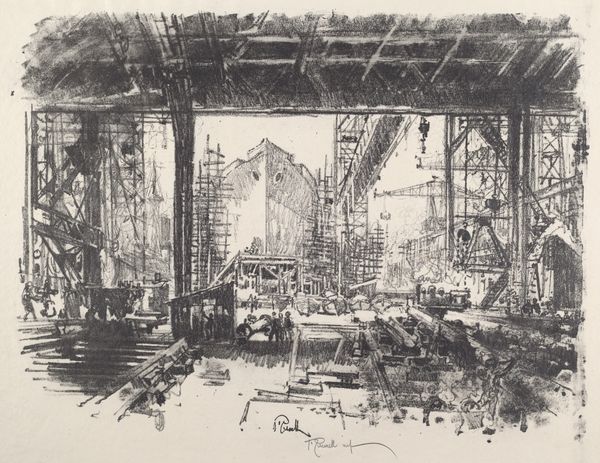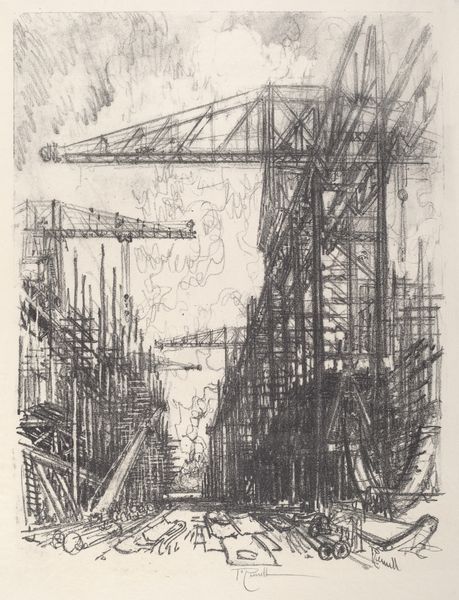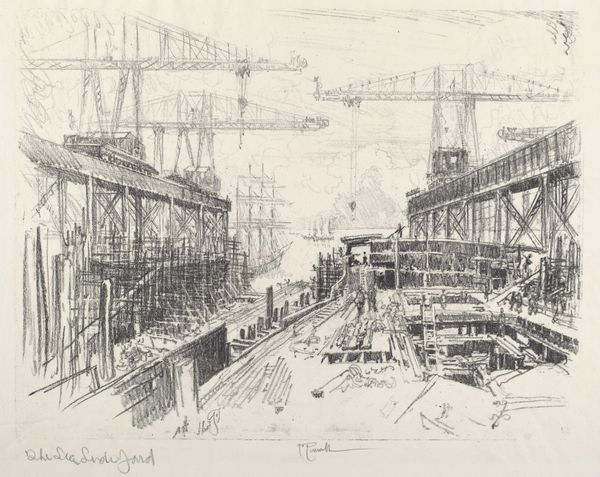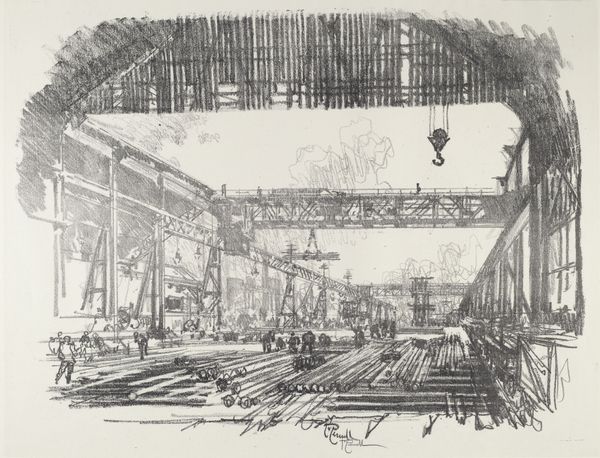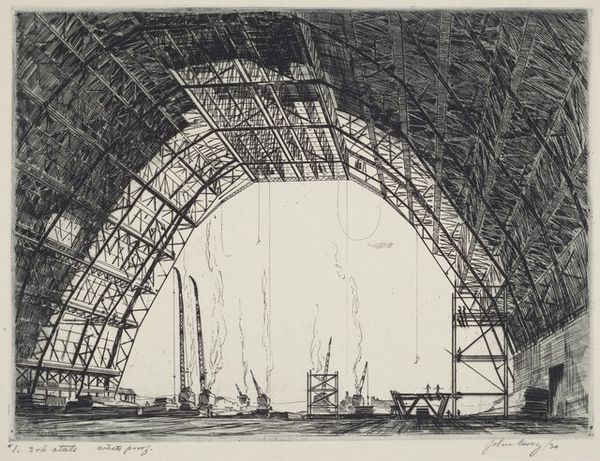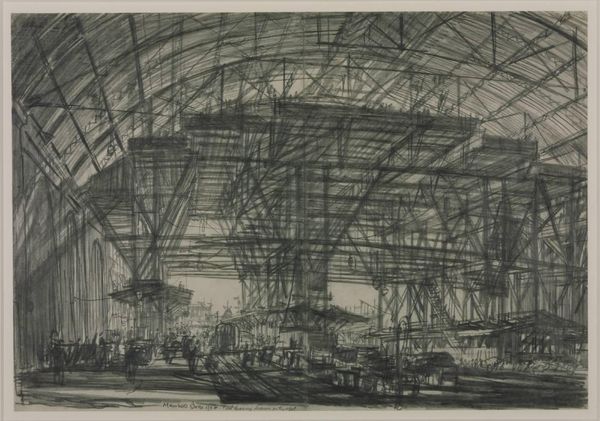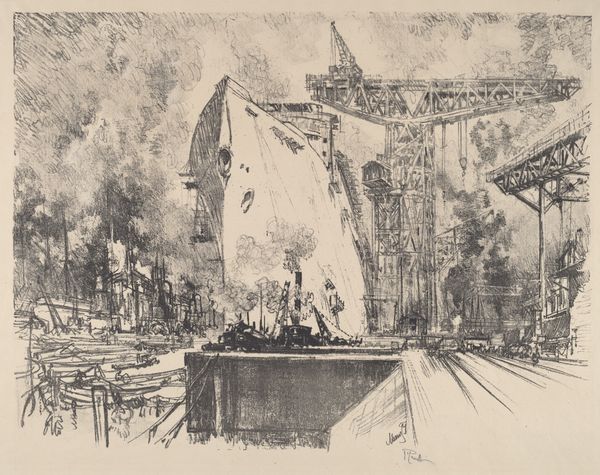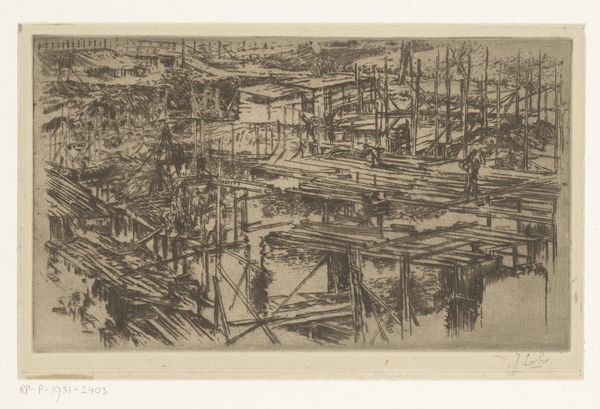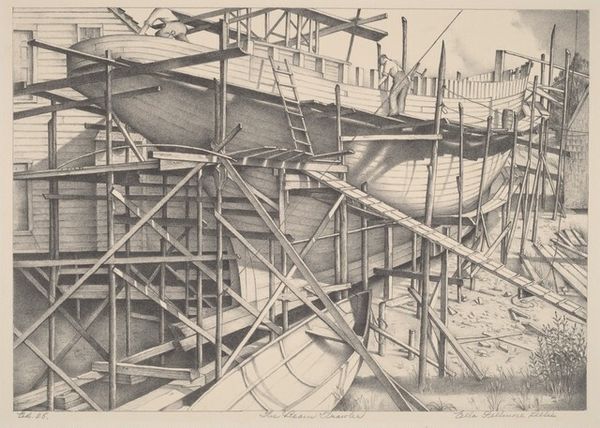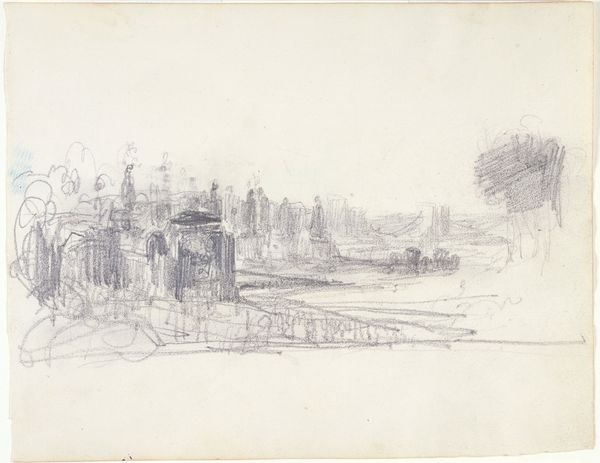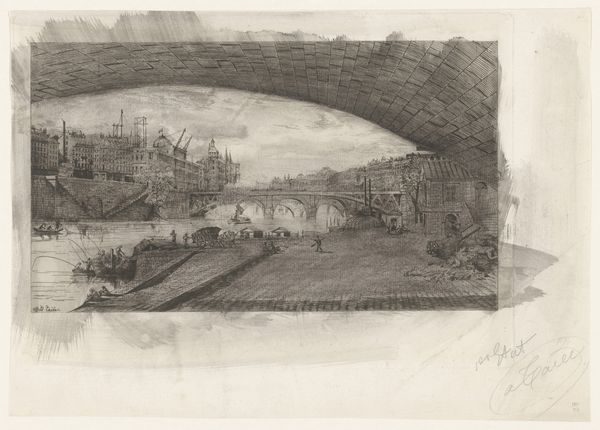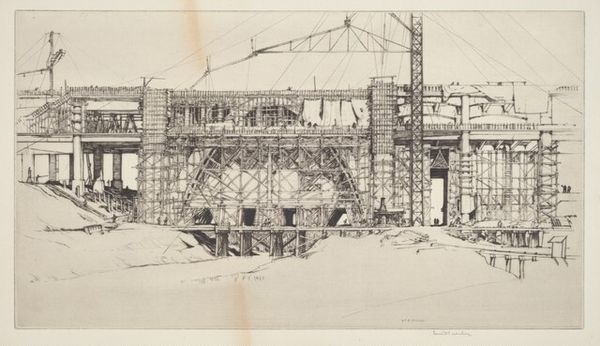
drawing, print, etching
#
drawing
# print
#
etching
#
etching
#
geometric
#
line
#
cityscape
Copyright: National Gallery of Art: CC0 1.0
Editor: This is Joseph Pennell’s "The Gantry," an etching from 1916. It's quite striking; almost overwhelming with all those geometric shapes and lines. What symbols or cultural memories do you find present in this piece? Curator: The gantry itself acts as a potent symbol of industrial ambition, reminiscent of both construction and potential destruction. It’s difficult to ignore the date – 1916. Does that evoke a feeling for you? Editor: It definitely makes me think about the First World War. Was this image made in relation to the war? Curator: Exactly. Think about the wartime need for ships. The gantry becomes a signifier of that, a machine for making machines of war, weighted with symbolic meanings of protection and aggression. Note the human figures at the base – dwarfed by the structure. Do you think this contrast conveys anything? Editor: Absolutely, they’re so small. It really emphasizes the power of industry, but maybe also its dehumanizing aspect? The repetitive geometry almost seems to swallow them up. Curator: Precisely. And the skeletal lines of the etching… they’re ghostly, evoking a sense of fragility beneath all that industrial might. This reveals a psychological complexity; progress intertwined with impermanence. Consider the cityscape barely visible in the distance; it almost appears to fade away under this emerging industrial landscape. Editor: That’s a perspective I hadn't fully considered. The receding cityscape does seem symbolic of something being eclipsed. Curator: Think of the visual language being created. Linear forms often suggest efficiency, direction and purpose. Can we find those ideas here, in the industrial and societal structures being made in 1916? Editor: Yes, the gantry reaches up towards the sky, projecting that sense of efficiency and reaching for the future you described, even a kind of monumentality, but maybe it can also be read as threatening or oppressive. I learned a lot just from considering the cultural symbolism, thanks! Curator: And thank you. It is through sharing and questioning such insights that art truly resonates through time.
Comments
No comments
Be the first to comment and join the conversation on the ultimate creative platform.
